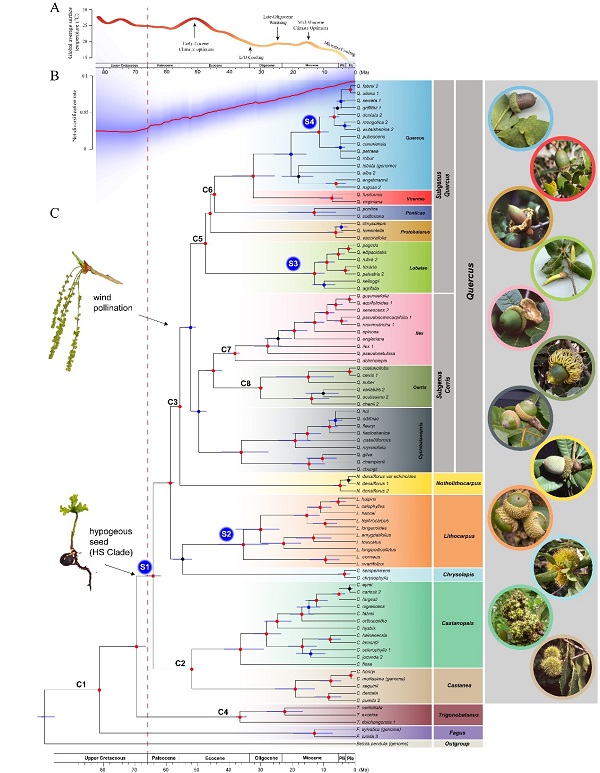

Northern Hemisphere forests changed drastically since the early Eocene due to global climate change. Central to the floristic replacement with significant ecological consequence are the roughly 900 species currently recognized within Fagaceae (oak, beech, chestnut, stone oak). Fossils of modern Fagaceae are well represented in the Northern Hemisphere, indicating long-term presence and differential patterns of diversification. Important components of the timing and pattern of macroevolutionary events and the role of ancient hybridization, however, have yet to be sufficiently described across Fagaceae.
A research group leaded by Profs. BaoSheng Wang (South China Botanical Garden, CAS) and Paul S. Manos (Duke University) reconstructed the evolutionary history of continental radiations of Fagaceae across the Northern Hemisphere. By using phylogenomic analyses of nuclear and plastid genomes, they investigated the timing and pattern of major macroevolutionary events and ancient genome-wide signatures of hybridization across Fagaceae. Innovation related to seed dispersal is implicated in triggering waves of continental radiations beginning with the rapid diversification of major lineages and resulting in unparalleled transformation of forest dynamics within 15 million years following the K-Pg extinction. They detected introgression at multiple time scales, including ancient events predating the origination of genus-level diversity. As oak lineages moved into newly available temperate habitats in the early Miocene, secondary contact between previously isolated species occurred. This resulted in adaptive introgression, which may have further amplified the diversification of white oaks across Eurasia. Taken together, this study provided exciting clues as to the historical causes/events leading to oak-dominated forests across the Northern Hemisphere.
The research article was published in Nature Communicaitons, titled “Phylogenomic analyses highlight innovation and introgression in the continental radiations of Fagaceae across the Northern Hemisphere”, for details see https://www.nature.com/articles/s41467-022-28917-1.

Figure 1. Phylogenetic relationships and divergence time estimation of Fagaceae.

